
Lessons on wildfire resilience from a 4,000-acre forest lab
In his years managing California woodlands, Rob York has come up with a few quick and easy ways to gauge whether a forest is prepared for wildfire.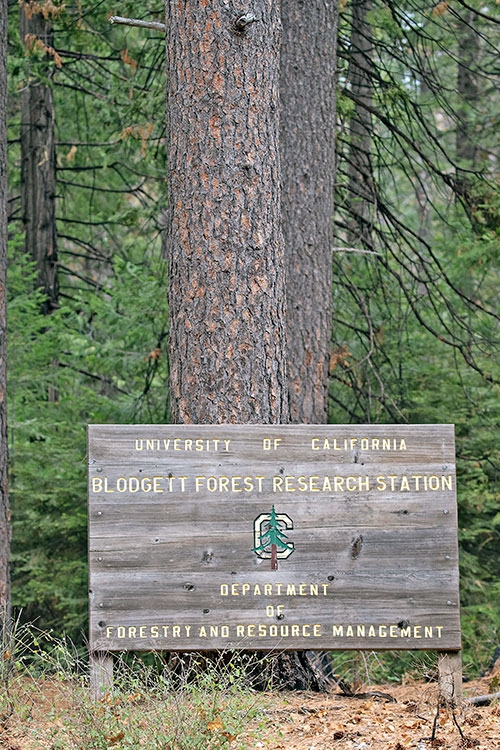
“The first question I like to ask is, ‘Can you run through the forest?'” York says.
York, an assistant cooperative extension specialist and adjunct associate professor of forestry at UC Berkeley, poses the question while standing in a grove of pine trees during a tour of Blodgett Forest Research Station, a 4,000-acre experimental forest in the northern Sierra Nevada. While fire suppression has allowed many of California's forests to grow thick and dense, this patch of forest is one you could actually run through: The area is punctuated by large trees spaced a few meters apart, separated by a smooth carpet of dried pine needles.
“The idea is, if it doesn't have a lot of buildup of surface fuel on the ground — sticks and logs — you should be able to run through it,” York adds. “Looking through this forest, I might have to jump over that log, but, generally, I could take a jog through it.”
For more than 50 years, York and other Berkeley forestry researchers have used Blodgett as a living laboratory to study how different land management treatments — including prescribed burning, restoration thinning and timber harvesting — can reduce the risk of severe wildfire and improve a forest's resilience to the impacts of climate change. In addition to research, Blodgett regularly hosts workshops to demonstrate different land management techniques to landowners.
After another year of record-breaking wildfires in California, the work at Blodgett is more critical than ever, and state and federal agencies are motivated to enact more effective forest management practices. In 2020, the state and the U.S. National Forest Service jointly committed to managing 1 million acres of California forests a year, and last month the Biden administration pledged billions in new federal funding to reduce wildfire risk in the state.
“[Blodgett] was really designed to eventually demonstrate land management alternatives and offer a glimpse into how they might look at bigger scales,” York said.
Experimenting with fire
Blodgett Forest is “pretty representative of millions of acres of Sierra mixed conifer forest,” said Ariel Roughton, a research stations manager at Berkeley Forests. After the majority of its trees were logged in the early 1900s, the forest was donated to Berkeley in the 1930s with the intent that it would be used to study sustainable timber production. Aside from a few old relics that survived early logging, the majority of the trees are regrowth and approximately 100 years old.

“Back then, people thought, ‘Why would you ever want to use fire for land management?' They wanted to grow trees, they want to grow timber. The idea of seeing black and char was literally off the scale,” said Scott Stephens, a professor of forest science and co-director of Berkeley Forests. “It's amazing that just a few decades ago, researchers didn't have the opportunity to do the work that Rob and Ariel and others are doing up here now.”
In the open, airy tract of forest that York could easily jog through, blackened scorch marks extend 10 to 15 feet up the trunk of each tree. Ecologists believe that before European colonization, these forests experienced fire once every 10 years or less, leading to open forest structures very similar to this one. Here, two years ago, Roughton, York and their colleagues conducted a prescribed burn to remove excess fuel from the ground and reduce the risk of wildfire.
“I think it's important to remember that nature hasn't taken its course without a lot of human intervention since the last glaciation, because there was strong Indigenous burning here,” said John Battles, a professor of forest ecology at Berkeley. “There has always been intense human stewardship of one sort or another.”
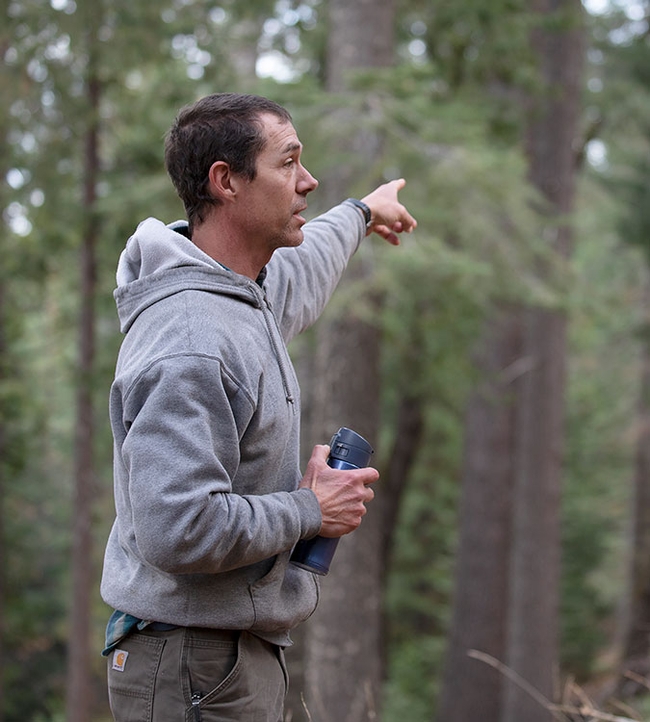
While there are forest management strategies that can be effective on a shorter time scale, it usually takes at least a few separate treatments over the course of a few years to successfully restore a forest and reduce its wildfire risk, York explains.
“It can be a challenge to get to the forest structure that we want,” York says. “It takes a lot of time, and it takes a lot of investment.”
Climate change is also narrowing the annual windows of time when conditions are best for prescribed burning, limiting when and how often foresters can safely burn. Hot, dry conditions usually make prescribed burning too risky during the summer, while rain and snow in the winter can leave the forest too wet and damp for fire to burn. However, research at Blodgett is showing that, with the right management decisions, prescribed burning during the winter can be made more viable.
“Because of timber harvests that removed some of the canopy and subsequent treatments to remove the ladder fuel, we now have more light hitting the ground, and it dries out faster,” Roughton said. “We've gotten to the point out here where we're able to burn more easily because of our past management actions.”
Friends of the forest
While York likes to imagine running through the trees, Battles has a slightly different metric for evaluating the health of a forest.
“You need to be able to run through the woods,” Battles said. “But I also want to see all six of my friends as I do my run.”
Battles' friends are the six tree species that make up the Sierra mixed conifer forest: oak, ponderosa pine, sugar pine, white fir, Douglas fir and incense cedar. Fire suppression — and the dense, overgrown forest structures that can result — often favor the survival of some of these species over others, leading to forests that are dominated by just one or two species. This lack of biodiversity can make the forest, as a whole, less resilient to stressors like bark beetles or tree pathogens, which often target some of these species, but not others.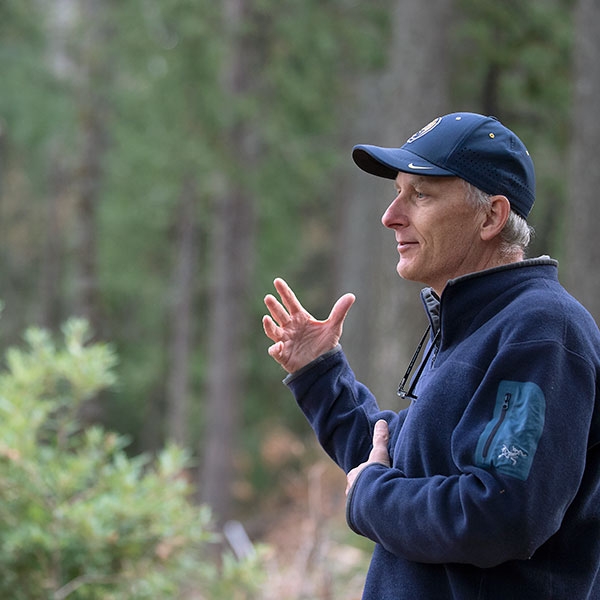
According to Battles, the open structure and frequent fire at this tract of Blodgett has allowed all six of his friends to flourish.
“I see my friend, ponderosa pine, which you don't see as frequently in the unburned forest because it's shade intolerant — it needs light. I see oak, and it also requires fire to get a lot of the oaks,” Battles said. “I see all six of my friends all here, and you only see them when you have management like this.”
Over the past 20 years, research has shown that prescribed burning and mechanical thinning with tools like the masticator can also benefit soil quality and water availability, while having no significantly negative impacts on forest ecosystems. While burning or otherwise removing plants and trees can release carbon dioxide into the atmosphere, which accelerates the impacts of climate change, reducing the risk of severe wildfire can help maintain the whole forest for long-term carbon storage.
However, applying these techniques across 33 million acres of California forestland remains a monumental task. Prescribed burning requires a great deal of expertise and is also limited by weather conditions and air quality regulations. Meanwhile, mechanical tree thinning can be costly, and unlike timber harvesting, it does not generate any revenue for landowners — though Berkeley researchers have suggested that creating a market for small trees and other woody biomass could help offset the cost while limiting carbon emissions.
“Fire used to be so common in this system, and that's no different than in most forests in California. But, when you take it out for that long, you begin this transformation,” Stephens said. “That's why we have to get both public and private entities together to come up with a philosophy to be able to move forward on this. Blodgett is 4,000 acres — that's interesting, but it doesn't really address the needs of the state. We always hope that our work shows people what's possible and then enables them to continue it.”

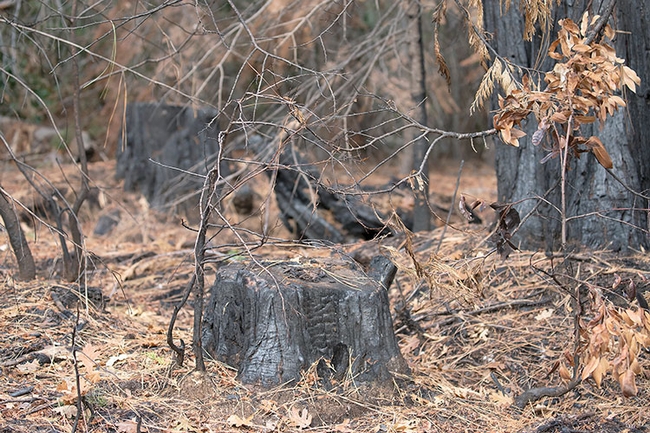

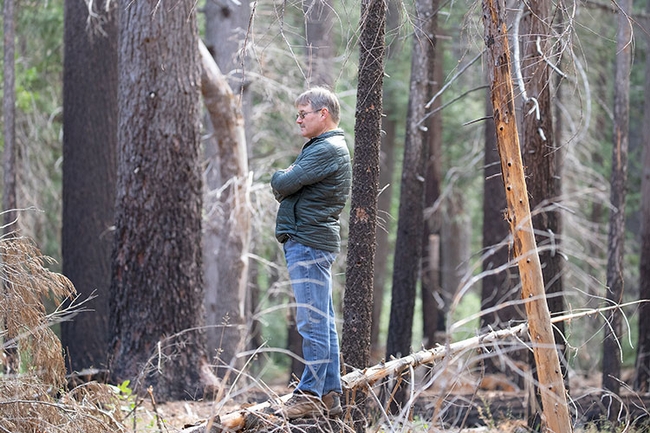
Posted by Walter Graves on February 2, 2022 at 11:42 AM